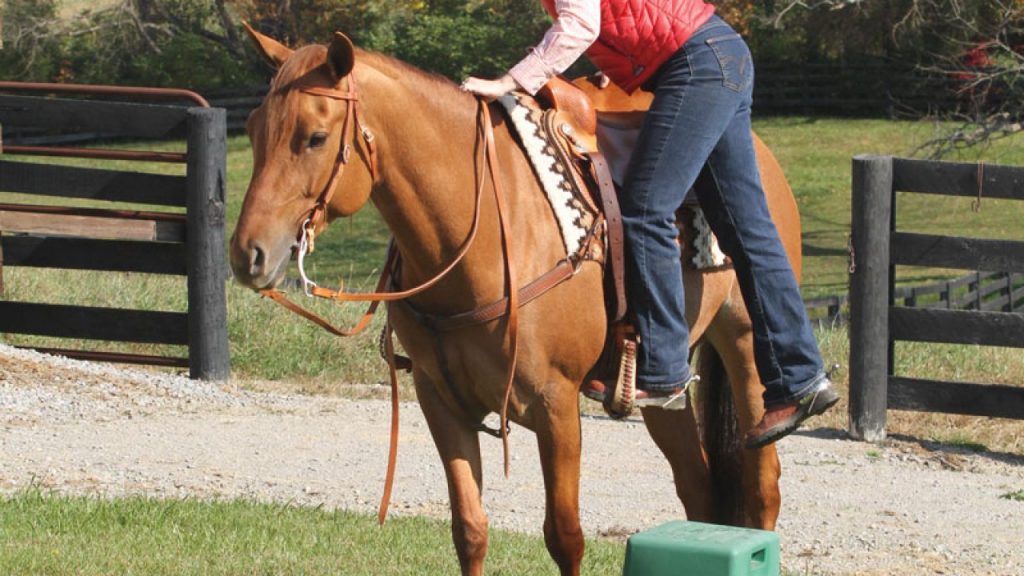- Understanding the nuances of different mounting styles is crucial for matching the needs of various riding disciplines.
- Mounting techniques can impact a rider’s performance and the horse’s comfort.
- Each equestrian discipline has developed a mounting style that optimizes rider effectiveness and safety.
- Proper mounting is essential for maintaining the health and longevity of the horse’s back.
- Dressage, show jumping, endurance riding, and Western riding each have distinct approaches to mounting.
As an equestrian enthusiast or professional, nothing is more crucial than establishing a perfect harmony between rider and horse. The way a rider mounts their horse is more important than many may realize. It sets the tone for the communication and connection that will follow, and each equestrian discipline carries its own set of mounting styles uniquely tailored to meet specialized demands. Riding is not a one-size-fits-all sport; a discipline-specific mount ensures that riders can maximize their performance while also keeping their equine partners comfortable and safe. Below, we will explore the diverse world of different mounting styles for different riding disciplines.
>> READ MORE:
- What Side Do You Mount A Horse The Age-Old Question Answered
- Master the Saddle: Essential Tips for New Riders on Mounting Horses from the Left Side
Contents
- 1 The Importance of Proper Mounting Techniques Across Disciplines
- 2 Mounting Styles in Dressage
- 3 Show Jumping: A Leap Into Action
- 4 Endurance Riding: The Long Haul Approach
- 5 Western Riding: Tradition Meets Practicality
- 6 Matching Mounting Styles to Rider and Horse
- 7 Mounting and Horse Welfare
- 8 Final Thoughts on Finding Your Perfect Mount
The Importance of Proper Mounting Techniques Across Disciplines
The way a rider gets onto a horse might seem trivial at first glance, but it encompasses a range of considerations, including safety, the horse’s physical wellbeing, and the rider’s control once seated. In disciplines such as dressage and show jumping, precision mounting can be the difference between a seamless start and a rocky one that upsets the sensitive balance and rhythm required for such sports.
Mounting Styles in Dressage
Dressage, known for its elegance and precision, calls for a rider to mount with subtle finesse. Riders often use a mounting block to lessen the strain on the horse’s back and to enter the saddle gently. The goal is to achieve a balanced seat from the start, without causing the horse to shift or become off-balance. Dressage saddles have long, straight flaps and deep seats that offer the rider support for intricate maneuvers, and proper mounting aids the transition into this position of partnership and control.

Show Jumping: A Leap Into Action
In show jumping, there is an undeniable need for quick, agile mounting, especially in the context of timed events. Jumping saddles have forward-cut flaps that accommodate the rider’s shorter stirrups and the forward-leaning posture necessary for clearing obstacles. Riders must mount with care to avoid unsettling the horse before the course, considering the need for immediate concentration and a steady pace.
Endurance Riding: The Long Haul Approach
Endurance riding presents unique challenges given the long distances covered. Mounting often happens while the horse is in a calm state, with the rider being mindful of conserving the horse’s energy. Saddles used in endurance are lightweight and comfortable, providing the necessary support for prolonged periods. Mounting with ease is essential, often with the use of a mounting block or assistance from the ground to prevent unnecessary exertion before the ride even begins.
Western Riding: Tradition Meets Practicality
Western riding, with its roots steeped in ranch work, emphasizes a practical and swift mount, in part due to the need to be ready for a variety of work-related tasks quickly. Western saddles, with their prominent horns and deeper seats, provide the rider with stability, and riders are taught to mount with a smooth, confident motion, establishing immediate readiness and control.
Matching Mounting Styles to Rider and Horse
The art of correctly matching mounting styles to the specific needs of each riding discipline greatly influences the health of the horse and the effectiveness of the rider. A mismatch could result in a lacked connection or even injury. Riders must not only learn how to mount their horses correctly but also understand why a particular style is beneficial for their chosen discipline.
Mounting and Horse Welfare
The impact of a rider’s weight when mounting should not be underestimated. Incorrect mounting can strain a horse’s muscles and spine, potentially leading to discomfort or long-term issues. Learning proper technique and using aids like mounting blocks can significantly diminish these risks.
Final Thoughts on Finding Your Perfect Mount
A successful mount in any equestrian discipline sets the tone for the ride ahead. By dedicating time to learning the optimal mounting style for their chosen field, riders can ensure a harmonious and effective partnership with their horse. It’s not just about getting on—it’s about starting right.
Underpinning this exploration is the understanding that the well-being of the horse and the clarity of communication between horse and rider are the foundational elements of any equestrian discipline. By selecting the mounting style that aligns with these principles, any rider can find their perfect match and thrive within their chosen sport.

